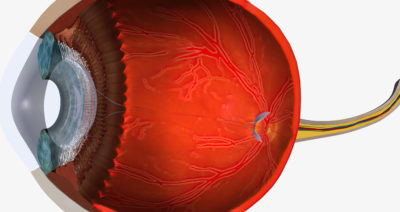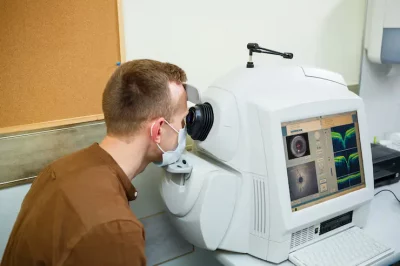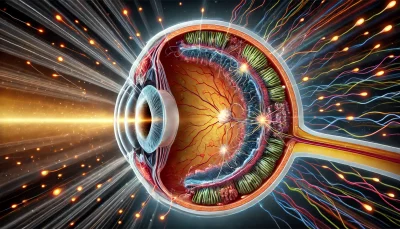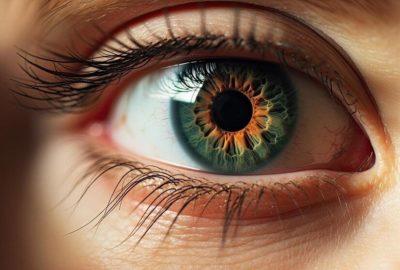The retina is one of the most intricate and vital parts of the human eye. To understand how vision works, it is essential to know about the 10 layers of the retina and their specific functions.
Each layer plays a unique role in converting light into neural signals and ensuring sharp, clear vision. This article explains the 10 layers of the retina and their functions, common retinal disorders, and how you can protect your eye health.
What Is Retina?
The retina is a thin, light-sensitive tissue at the back of the eye responsible for converting incoming light into electrical signals. These signals travel through the optic nerve to the brain, enabling sight.
Studying retinal anatomy and function helps us answer the question of what the retina is, and appreciate how it allows us to perceive colour, detail, and motion in our everyday surroundings.

What Are the 10 Layers of Retina? A Layer-by-Layer Guide
When discussing the 10 layers of retina in order, it is important to know that they are arranged from the outside (closest to the choroid) to the inside (facing the vitreous). These layers ensure proper light capture, signal processing, and communication with the brain.
Outer Layers – Retinal Pigment Epithelium and Photoreceptor Layer
The retinal pigment epithelium’s function includes absorbing excess light, preventing scatter, and nourishing the photoreceptors. The photoreceptor layer, rods and cones, are responsible for detecting dim light and colour vision, respectively.
Together, they form the first stage in vision processing.
Middle Layers – External Limiting Membrane, Outer Nuclear Layer & Outer Plexiform Layer
The external limiting membrane acts as a supportive barrier. The outer nuclear layer’s function lies in housing the nuclei of photoreceptors, while the outer plexiform layer’s role is to connect photoreceptors with bipolar and horizontal cells, facilitating signal integration.
Inner Layers – Inner Nuclear Layer, Inner Plexiform Layer & Ganglion Cell Layer
The inner nuclear layer contains bipolar, amacrine, and horizontal cells essential for intermediate processing. The inner plexiform layer enables communication between bipolar and ganglion cells. The ganglion cell layer functions as the main output pathway, transmitting refined signals to the optic nerve.
Final Layers – Nerve Fibre Layer and Inner Limiting Membrane
The nerve fibre layer function involves gathering ganglion cell axons and directing them towards the optic nerve. The inner limiting membrane forms a protective boundary between the retina and vitreous, maintaining retinal structure and stability.
How Each Retinal Layer Supports Healthy Vision
To appreciate the roles of the 10 layers of retina, we must understand how each contributes to processing light, protecting retinal cells, and transmitting information effectively to the brain.
Turning Light into Vision – Phototransduction and Neural Signals
The phototransduction process in the retina starts when rods and cones capture light and convert it into electrical signals. These signals pass through intermediate cells, are refined by the plexiform layers, and finally exit through ganglion cells towards the brain.
Protecting and Nourishing the Retina – RPE and Supporting Cells
The RPE functions include recycling visual pigments, regulating nutrients, and removing waste. With the help of supporting cells of the retina, the RPE maintains overall retinal health, prevents oxidative stress, and safeguards photoreceptor performance.
Communicating with the Brain – Nerve Fibre Layer and Ganglion Cells
The retinal nerve fibre layer collects electrical impulses generated by photoreceptors and intermediate cells. Ganglion cells then transmit this information through the optic nerve, allowing the brain to interpret visual signals into images we can recognise.
Common Conditions Affecting Retinal Layers
Many retinal diseases affecting specific layers can compromise vision. Damage to even one layer can significantly alter how light is processed and perceived.
Age-Related Macular Degeneration and the RPE
Macular degeneration RPE damage impairs nutrient transfer and waste removal, causing central vision loss. This condition highlights the crucial role of the retinal pigment epithelium in sustaining healthy sight in older adults.
Diabetic Retinopathy and Vascular Layers
Diabetic retinopathy retinal layers show swelling, bleeding, and abnormal vessel growth due to prolonged high blood sugar. Since the vascular layer of the retina nourishes the inner tissues, its damage disrupts normal retinal function and can lead to blindness.
Retinal Detachment and Layer Separation
In detached retina layers, separation occurs between the retina and its supportive tissues. Retinal detachment warning signs include sudden floaters, flashes, and vision loss. Immediate treatment is vital to preserve vision and prevent permanent damage.
Protecting Your Retinal Layers – Lifestyle Tips for Healthy Vision
To maintain retinal health, lifestyle changes are as crucial as medical treatments. Habits that support eye health can delay or prevent retinal conditions.
Nutrition and Vitamins That Support Retinal Health
A diet rich in antioxidants is vital. The best foods for retina health include leafy greens, carrots, berries, and oily fish. Important vitamins for eye health include vitamin A, C, E, and zinc, which also protect retinal tissues.
The Importance of Regular Eye Exams
Regular eye exams help identify early retinal changes before symptoms appear. Early detection of retina diseases like macular degeneration or diabetic retinopathy allows timely treatment, protecting vision and avoiding irreversible damage.
When to See an Ophthalmologist for Retinal Issues
When to consult an eye doctor: seek help if you notice sudden flashes, floaters, blurred vision, or eye pain. These retinal symptoms to watch may indicate urgent conditions requiring immediate intervention.
Conclusion
The 10 layers of retina are critical for healthy vision, working in harmony to capture light, process signals, and communicate with the brain. Understanding the 10 layers of the retina, from outside to inside, helps explain how vision is sustained and why protecting these layers is essential.
While a 10 layer retina mnemonic can help students recall their sequence, recognising their real-world roles highlights the importance of regular eye care. Maintaining good nutrition, attending regular eye exams, and seeking medical advice promptly are the best strategies









